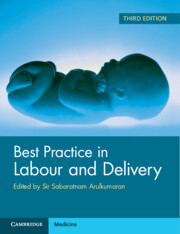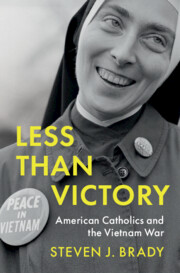Refine search
Actions for selected content:
3396011 results
The impact of balance of multilingual exposure on gesture comprehension in children above preschool age
-
- Journal:
- Applied Psycholinguistics / Volume 46 / 2025
- Published online by Cambridge University Press:
- 17 October 2025, e32
-
- Article
-
- You have access
- Open access
- HTML
- Export citation

Before the Fed
- J.P. Morgan, America's Lender of Last Resort
-
- Published online:
- 16 October 2025
- Print publication:
- 30 October 2025

Best Practice in Labour and Delivery
-
- Published online:
- 16 October 2025
- Print publication:
- 06 November 2025

Less Than Victory
- American Catholics and the Vietnam War
-
- Published online:
- 16 October 2025
- Print publication:
- 11 September 2025

Letterworlds in Late Nineteenth-Century France
- The Epistolary Culture of Mallarmé, Morisot, Van Gogh, Cézanne, and Zola
-
- Published online:
- 16 October 2025
- Print publication:
- 30 October 2025

Prison and the Novel in Eighteenth-Century Britain
- Form and Reform
-
- Published online:
- 16 October 2025
- Print publication:
- 30 October 2025
8 - ‘So Elusive and Yet So Palpable’: Performers Imagine Haydn
-
-
- Book:
- Haydn Studies 2
- Published online:
- 18 October 2025
- Print publication:
- 16 October 2025, pp 182-206
-
- Chapter
- Export citation
Bibliography
-
- Book:
- Chips from a Calcutta Workshop
- Published online:
- 26 September 2025
- Print publication:
- 16 October 2025, pp 194-206
-
- Chapter
- Export citation
Evaluating “Conmigo, Contigo, Con Todo”: Effects of a community mental health initiative on Afro-Colombian teachers
-
- Journal:
- Cambridge Prisms: Global Mental Health / Volume 12 / 2025
- Published online by Cambridge University Press:
- 16 October 2025, e117
-
- Article
-
- You have access
- Open access
- HTML
- Export citation
10 - A Neo-Kantian Approach to Competition Law?
-
-
- Book:
- Toward an Inframarginal Revolution
- Published online:
- 26 September 2025
- Print publication:
- 16 October 2025, pp 355-408
-
- Chapter
- Export citation
2 - Conceptualizing Regime Complex Effectiveness
-
- Book:
- Governing Energy Transitions
- Published online:
- 26 September 2025
- Print publication:
- 16 October 2025, pp 24-41
-
- Chapter
-
- You have access
- Open access
- HTML
- Export citation
13 - The Language of Dialect Writing
- from Part I - The Textual Record
-
-
- Book:
- The New Cambridge History of the English Language
- Published online:
- 18 October 2025
- Print publication:
- 16 October 2025, pp 326-356
-
- Chapter
- Export citation
5 - Seeing the Word
- from Part II - A Sign for This Generation: Reading the Gospels with Origen
-
- Book:
- The Life of Jesus in the Writings of Origen of Alexandria
- Published online:
- 26 September 2025
- Print publication:
- 16 October 2025, pp 92-114
-
- Chapter
- Export citation
Government Supervision and Control Mechanisms for the Carbon Market in China: A Principal-Agent Perspective
-
- Journal:
- The China Quarterly , First View
- Published online by Cambridge University Press:
- 16 October 2025, pp. 1-19
-
- Article
- Export citation
Acknowledgements
-
- Book:
- Law and Constitutional Change
- Published online:
- 26 September 2025
- Print publication:
- 16 October 2025, pp xiii-xiv
-
- Chapter
-
- You have access
- Open access
- HTML
- Export citation
Contributors
-
- Book:
- Shakespeare Survey 78
- Published online:
- 08 October 2025
- Print publication:
- 16 October 2025, pp vi-vi
-
- Chapter
- Export citation
Part I - The Origins of “Thought Experiment” in Kant and Ørsted
-
- Book:
- Kierkegaard and the Structure of Imagination
- Published online:
- 26 September 2025
- Print publication:
- 16 October 2025, pp 21-86
-
- Chapter
- Export citation
5 - Music in the Catholic Reformation of Seventeenth-Century Bohemia
- from Part I - Before 1800
-
-
- Book:
- A History of Music in the Czech Lands
- Published online:
- 21 October 2025
- Print publication:
- 16 October 2025, pp 72-86
-
- Chapter
- Export citation
The Burden of Engagement: Rethinking Epistemic Friction through LGBTQIA+ Experience
-
- Journal:
- Episteme , First View
- Published online by Cambridge University Press:
- 16 October 2025, pp. 1-15
-
- Article
-
- You have access
- Open access
- HTML
- Export citation
